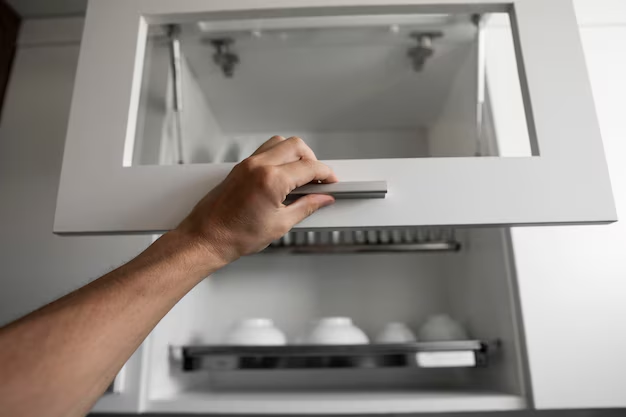How Long Can Your Fridge Keep Things Cool Without Power?
Imagine the lights suddenly flicker and go out. For a moment, the world around you is silent. You might immediately think about your cell phone or flashlight, but soon your thoughts turn to the refrigerator humming quietly at the center of your kitchen. How long will your food remain safe during a power outage? It's an important question with practical implications for food safety and budgeting, and understanding the dynamics involved can help you make informed decisions during such events.
The Crucial Role of Temperature in Food Safety
At the heart of any refrigeration dilemma is food safety. A refrigerator maintains an internal temperature ideally below 40°F (4°C) to prevent the growth of bacteria. Once the power goes out, maintaining this temperature becomes a race against time.
Understanding the Danger Zone
The "danger zone" for perishable foods sits between 40°F and 140°F (4°C and 60°C). Bacteria thrive in this range and can double in number in a short time. To prevent unwanted bacterial growth, it's crucial to keep the fridge closed as much as possible during a power outage, trapping the cold air inside.
Quick Tips to Keep Foods Safe:
- 🤏 Limit Door Opening: Every peek releases cold air.
- 🥶 Group Items Together: Place items closely to retain the cold longer.
How Long Can Food Stay Chilled?
So, how long can you trust your fridge to keep food safe without power? Generally speaking, a closed refrigerator can maintain a safe temperature for up to four hours, while a freezer, if full, can sustain its cold for approximately 48 hours (or 24 hours if half-full).
Factors Influencing Cooling Duration
Several variables affect how long your refrigerator and freezer retain cold after a power outage:
Volume and Organization: A well-stocked fridge holds cold better than one that is half-empty. Packing the items closely together can boost the duration for which they remain cold.
Room Temperature: Ambient temperature plays a significant role; warmer surroundings might decrease the time your appliances can keep cold.
Refrigerator Quality: Different models vary in insulation efficiency. More modern or high-tech refrigerators might provide marginally better insulation.
Pro Tip: 💡 Adding ice or ice packs to your fridge can extend cooling time by offering supplemental cold.
Assessing Food Safety Post-Outage
Once the power resumes, it’s time to assess which items are safe to consume and which need to be discarded.
Trusting Your Senses
For the most part, you should rely on your senses—but with care. Look for any visible signs of spoilage, sniff for off odors, and consider texture changes as indicators. If foods smell or look unusual, it’s safest to discard them.
Foods That May Need Extra Caution:
- Dairy Products: Milk, yogurt, soft cheeses might fall prey to bacteria quickly.
- Meats and Poultry: The same applies to raw or cooked meats.
- Eggs and Seafood: Should be scrutinized closely for any signs of spoilage.
Remember: When in doubt, throw it out! Ensuring safety is better than risking potential foodborne illnesses.
Preparing for Power Outages
Power outages might be sudden, but some preparation can help safeguard your food.
Power Failure Kit Essentials
Having a power failure kit specific for your fridge and freezer can be invaluable. Here are some useful items:
- 📦 Insulated Coolers: Ideal for moving perishables in case the outage outlasts the cooling period.
- 🧊 Ice Packs or Blocks: Boosts the cold retention in your fridge.
- 🔦 Flashlight: For assessing the freezer and fridge content safely without opening the main door.
Proactive Steps When An Outage is Expected
If you anticipate a power outage due to a natural event or maintenance issue:
Set Refrigerator and Freezer to the Coldest Setting: Before the power goes out, turning your appliances to their coldest setting will extend the cooling time.
Stockpile Ice: If possible, keep a stash of ice or use empty water bottles filled two-thirds with water as a DIY ice block also useful once frozen.
Plan Meals Wisely: Consume highly perishable items first to minimize your loss.
Post-Outage Clean-Up and Lessons Learned
Once the lights return and appliances resume, there's a clean-up and reviewing process that can set you up better for the next potential outage:
Cleaning Your Appliances
After a lengthy outage, cleaning your refrigerator and freezer can prevent odors and mold growth:
🐳 Baking Soda Rinse: A diluted solution of baking soda can be used to clean and neutralize any unpleasant odor.
🍋 Lemon Juice: Acts as a natural deodorizer and anti-bacterial agent.
Re-familiarize with Your Insurance Coverage
If your household has experienced significant food loss, now might be the time to investigate whether your homeowner's insurance policy covers losses from power outages.
Summary of Practical Tips 📝:
Limit opening the fridge/freezer: Keep doors closed to retain cold air.
Use ice or frozen water bottles: They act as supplementary cooling agents.
Quickly assess food after power resumes: Check for spoilage signs before consumption.
Create a power outage kit: Stock it with ice packs, insulated coolers, and flashlights.
In conclusion, understanding how long your refrigerator and freezer can keep items safe during a power outage, and preparing preemptively, can mitigate food loss and potential health risks. Through informed action, you can face these unforeseen events with resilience and confidence, safeguarding both your perishable goods and mental peace effectively.
